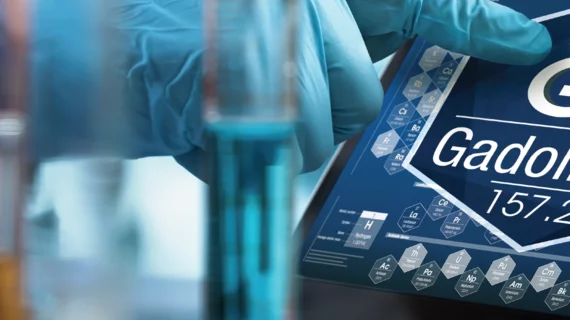Novel imaging approach IDs CAD without the risk of a contrast agent
Researchers at Beth Israel Deaconess Medical Center in Boston have developed an imaging technique that allows physicians to diagnose coronary artery disease (CAD) without the risk of a contrast agent.
Reza Nezafat, PhD, and colleagues in the Cardiovascular MR Center at BIDMC outlined their technique in a recent issue of JACC: Cardiovascular Imaging. The team was looking for an alternative to imaging suspected CAD patients that didn’t involve drugs or any contrast dye, since recent evidence suggests risky agents like gadolinium can remain in the body for years.
“Current stress cardiac imaging requires administration of gadolinium contrast agent,” Nezafat, scientific director of the Cardiovascular MR Center, said in a release. “However, recent data have shown that gadolinium deposits in the brain and other organs. We aimed to develop a noninvasive imaging technique that eliminates the need for any contrast administration to measure changes in the blood flow in the myocardium.”
The researchers’ method involves tracking changes in blood flow in the myocardium after a stress test by measuring the magnetic properties of the tissue. They tested the approach first in healthy subjects, who underwent a series of baseline scans before they were asked to lie on their backs at the opening of an MRI machine and pedal an exercise bike. Within 30 seconds of pedaling, when their heart rate was elevated, patients underwent an MRI scan that measured changes in tissue properties to quantify shifts in blood flow in the myocardium.
Nezafat et al. also applied the technique to patients with known or suspected CAD, asking them to follow a similar imaging protocol. Studying images from both groups, the team found that magnetic properties of the myocardium change differently in areas impacted by coronary atherosclerosis.
Their method was successful in quantifying those differences for a more risk-free diagnosis.
“In this proof-of-concept study, we demonstrated that a quantitative cardiac MR approach that measures tissue properties of heart muscles, combined with an exercise protocol using an MRI-compatible ergometer in an MRI suite might have the potential to assess flow-limiting coronary artery stenosis in patients with suspected CAD without the need for gadolinium contrast injection or pharmacological stress agents,” Nezefat said. “Larger studies are warranted to confirm the clinical performance of our quantitative cardiac MR approach with exercise stress as an alternative to the currently common method of noninvasive assessment of coronary artery disease.”

